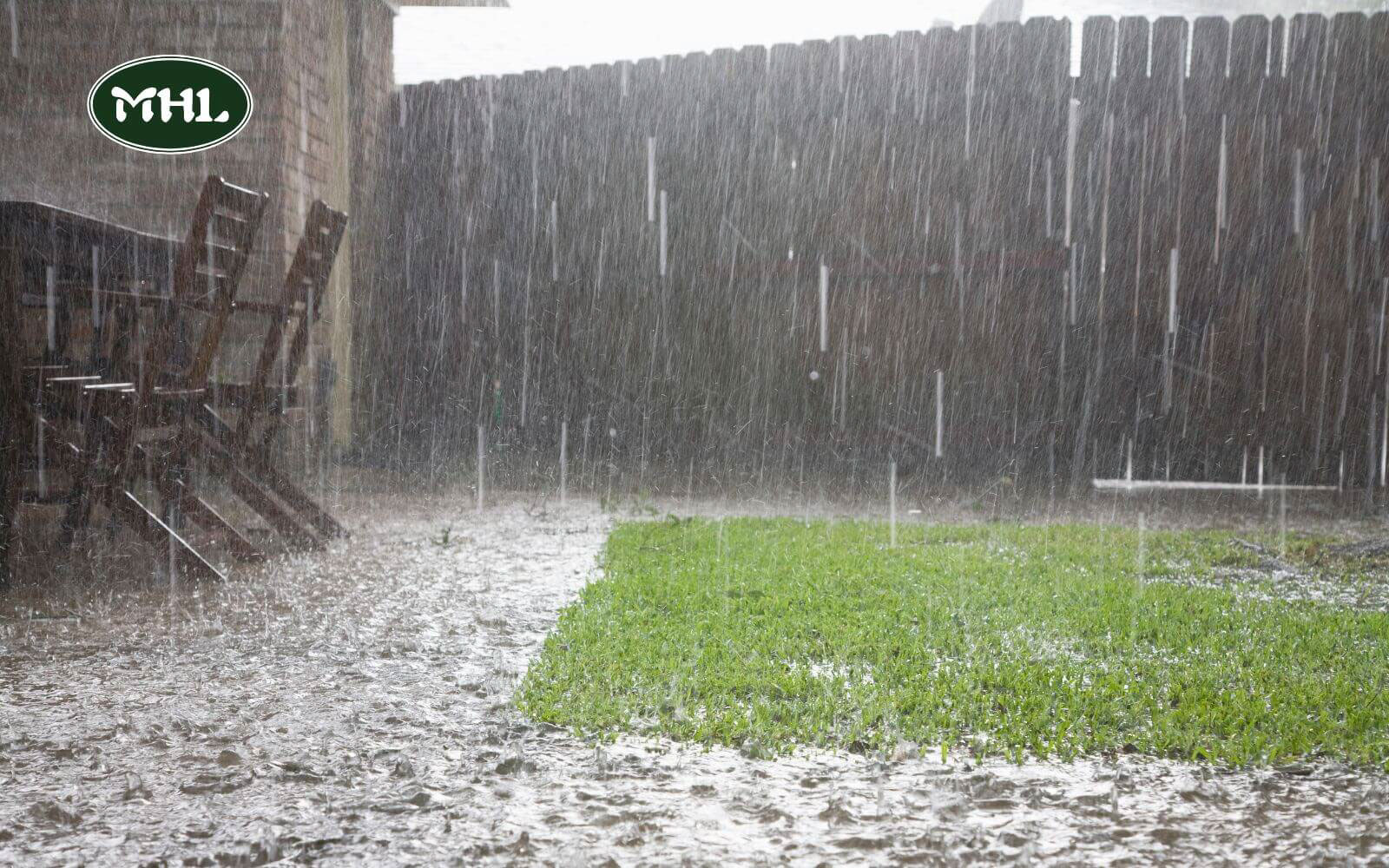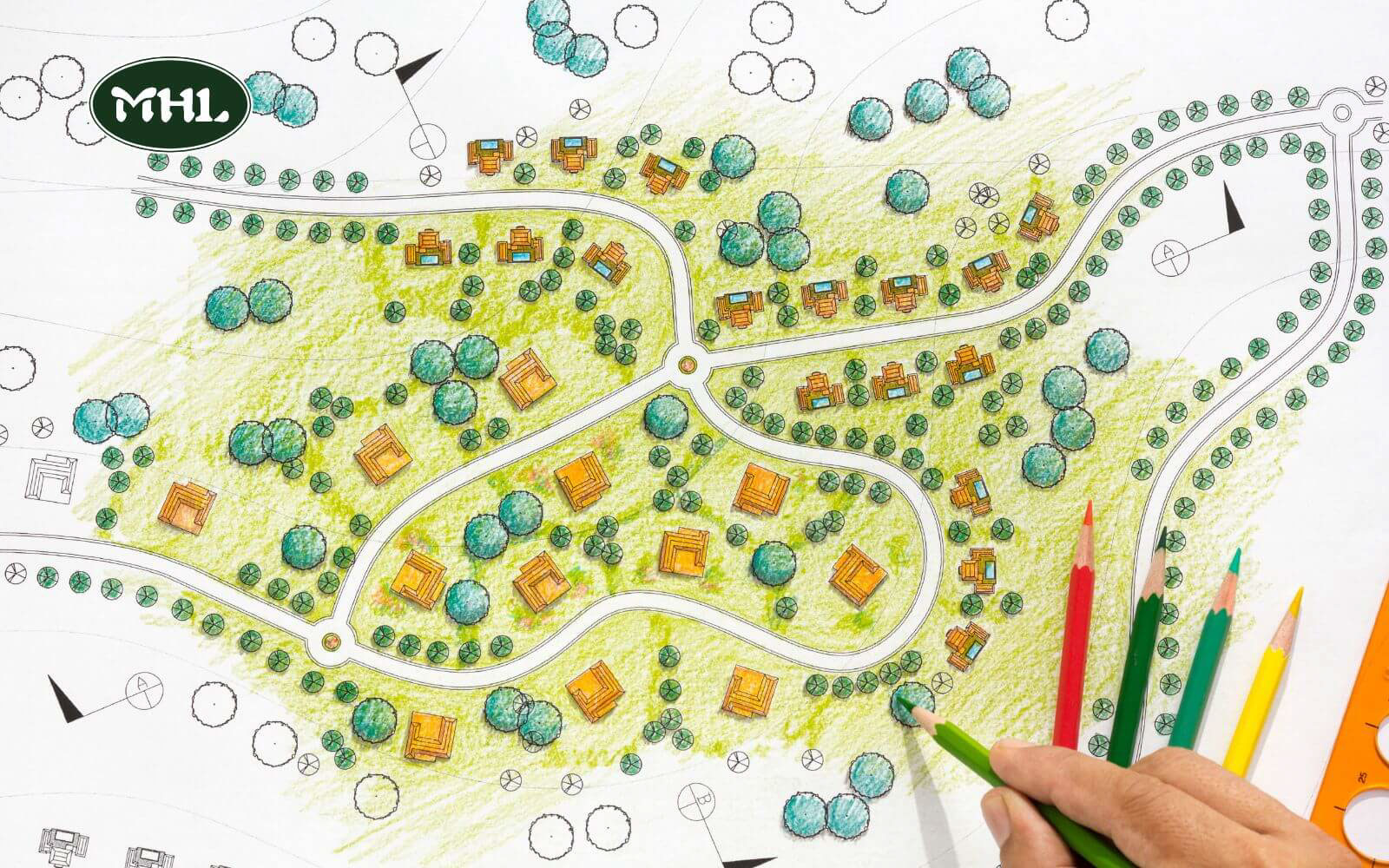If you’re looking to refresh your front yard for more curb appeal or create a garden for personal enjoyment, it’s helpful to understand the basics of landscape design. Landscape design focuses on creating a balanced and appealing look using elements like color, line, and texture. But what is landscape design and why is it important? Read this article to learn more.
What is landscape design?
Landscape design is the practice of organizing the features of an outdoor space to make it both practical and visually appealing. It involves considering factors like climate, soil, terrain, existing plants, and how the space will be used. Landscape designers create plans that balance hard elements, like patios and walkways, with soft elements, like plants and trees, to achieve the desired look and function.

Why is landscape design important?
Landscaping goes beyond simply beautifying a yard. Even a basic lawn can look appealing with proper care, but landscape design is about creating a stunning retreat while minimizing the environmental impact. While adding potted plants can enhance the yard’s appearance, the true value of landscape design lies in its ability to improve both aesthetics and environmental harmony.

Set clear goals from the start
Every landscape project involves a variety of inputs, resources, and limitations. A professional landscape designer takes all these factors into account to create a realistic plan. By planning ahead, you’re more likely to stay within your budget and timeline. It’s much easier to plan on paper early on than to build without a clear design.
Focus on low-maintenance solutions
The great news is that “low maintenance” is both sustainable and practical. Landscape architects and designers excel at finding solutions that balance beauty, functionality, and ease of care. Whether it’s walkways, decks, or retaining walls, materials are chosen with maintenance and budget in mind.
Beyond hardscaping, garden beds are designed to complement local environmental conditions, ensuring healthier gardens that need less upkeep. Choosing the right plants for the right places leads to long-term success, and the increasing availability of native plants helps support local ecosystems.

Tackle specific environmental concerns
The art of landscape design and architecture expertly adapts to environmental conditions, such as sunlight, shade, microclimates, soil, precipitation, and wind—factors that significantly influence what will thrive on your property.
Landscape professionals excel at selecting design elements that suit these specific site conditions. Early in the process, a site analysis is conducted to document existing conditions, followed by an opportunities and constraints analysis to determine the best placement for various elements.

Save time and money
Whatever you build is an investment you’ll live with for years, and it may even be passed on to the next generation. Good or bad decisions are made early in the project.
Starting construction without a clear vision can lead to missed opportunities for creating a cohesive design and finding cost-saving solutions. For instance, during the grading phase, a professional landscape designer will plan for all elements—such as retaining walls, decks, patios, and fences—at once. This comprehensive approach saves time and money by preventing the need to redo work done without a solid plan.

Account for all existing conditions
Every landscape project must follow local, provincial, and federal regulations, but that’s just the beginning. You’ll also need to consider property lines, easements, and buried utilities, all of which involve legal and safety concerns. These complexities can escalate quickly, so having a landscape expert on board can make the process much smoother.
What are 6 basic elements of landscape design?
The landscape design process starts by assessing your needs, preferences, and the specific conditions of the site. Once that’s done, the main design elements—line, form, color, texture, visual weight, and scale—come together to create a unified and harmonious look.
These 6 elements are key to most landscape styles. Let’s explore them in more detail:
- Lines
- Form
- Color
- Texture
- Visual weight
- Scale

Line
Lines are essential in garden design, shaping the landscape and guiding movement throughout the space. They help create patterns, define areas, form structures, and unify themes.
Lines can be created where different materials meet, like a brick patio beside a lawn, where objects stand out against a backdrop, such as a tree against the sky, or through the intentional placement of materials, like a fence.

A landscape designer uses lines to create patterns, shape spaces, and unify the theme of a landscape. For example:
- Straight lines convey formality, directing the eye to focal points with precision.
- Curved lines, however, feel more relaxed and invite a leisurely exploration of the garden.
- Vertical lines draw the eye upward, creating a sense of height.
- Horizontal lines emphasize width, making spaces feel larger than they are.
Form
Form refers to the visual shape and structure of three-dimensional elements in a landscape, such as plants, structures, beds, and garden ornaments. Forms can be formal (like circles or squares) or informal and natural (like organic edges or meandering lines).
Form also defines negative space, such as lawns, patios, or pools, which balance the positive spaces created by plants and buildings. In landscape design, the use of negative space adds visual relief and creates a harmonious flow in the garden.

Visual weight
Visual weight in landscape design is about how certain elements stand out because of their size, shape, or contrast. Features with more visual weight grab attention and become focal points, while those with less weight blend into the background, helping tie everything together. This balance creates a cohesive, well-organized look in your landscape.
Color
Color is a powerful tool in landscape design, bringing vibrancy, depth, and visual interest to a garden. From the bright hues of flowers and green foliage to non-living elements like hardscaping or decor, color helps set the garden’s mood.
Warm tones like reds, oranges, and yellows add energy and excitement, while cool colors like blues and purples create a sense of calm and relaxation. Strategic color placement can guide the viewer’s eye, enhance flow, and elevate the overall aesthetic of the space.

Scale
In outdoor design, scale refers to the size relationship between elements in the garden and their surroundings. Ensuring your design is proportionate to the space helps maintain a balanced look.
When choosing the right scale for plants and landscape structures, consider the size of your home and yard. Larger homes and spaces often need bigger plants and structures to feel cohesive.
Scale is also crucial in landscape design drawings, as installation crews rely on these precise measurements to install plants, hardscapes, and water features accurately. Designers select the appropriate scale depending on the project type—for residential landscapes, 1/8 inch = 1 foot works well, while for commercial projects, 1 inch = 10 feet is more suitable.
Texture
When it comes to landscape design, texture is kind of a big deal! Texture is all about how plants look and feel—whether it’s their leaves, flowers, bark, or branches. It can totally change the vibe of your space. Plants are usually grouped by texture – coarse, medium, or fine. Think big, bold leaves for that “look at me” effect (coarse), or delicate, soft foliage for a more chill, calming feel (fine).
But it’s not just plants! Hardscape materials like stones, bricks, and wood bring their own texture too. Whether it’s rough or smooth, these materials can really amp up the contrast or keep things consistent.
Types of landscape designs to consider
A well-designed landscape enhances the beauty of your property, increases its value, and creates a serene home environment. The right landscape design can greatly improve curb appeal and create a welcoming, nature-filled atmosphere.
- Residential landscapes are made for homeowners to enjoy, often including patios, gardens, decks, and play areas. They focus on creating attractive and useful spaces around homes, apartments, or townhouses to fit residents’ needs.
- Commercial landscapes are designed for businesses, using features like parking lots, signage, and plants that complement the building’s style. These designs are meant to be functional and appealing, helping to attract customers and improve a business’s image.
- Public landscapes are for everyone to enjoy and can include parks, playgrounds, and gardens. They are created to be useful, pleasant to look at, and to make life better for the community.
- Sustainable landscape design focuses on eco-friendly ideas, such as using native plants, saving rainwater, and renewable energy to create green, resource-saving spaces.
- Landscape architecture combines creativity and science to design outdoor areas. Landscape architects use their expertise in plants, soil, and water to make beautiful, sustainable designs for homes, businesses, and public areas.

If you’re looking for inspiration for your landscape design, these blogs might be just what you need:
What is xeriscape landscaping and why might it be your best choice?
What Is hardscaping? 10 must-know types of hardscapes!
10 brilliant retaining wall stair ideas to enhance your garden
Some FAQ about landscape designs
Is landscape design about planting trees?
Some people mistakenly believe that the landscape design is just about planting trees. In reality, it involves much more, including construction, installation, and the coordination of various elements such as lighting, stone statues, and decorative features.
Is landscape design gardening?
Landscaping is often associated with ornamental plant care, but it’s much more than just gardening. To create beautiful landscape designs, various disciplines like art, design, architecture, engineering, and construction must come together.
Landscape professionals need in-depth knowledge of plants and a keen aesthetic sense. They are skilled in planning and executing projects to deliver unique, well-designed spaces. This profession requires a high level of expertise, far beyond simple gardening.

Will architectural interiors design the landscape?
Landscape design and interior design are, in fact, two distinct fields. While interior design focuses on arranging the inside of a home, landscape design is concerned with the exterior spaces. For larger projects, these two areas are typically handled separately, with specialized professionals overseeing each aspect independently.

How do I get started on my landscape design?
The first step is reaching out to the landscape experts at Mile High Lifescape! We’ll begin by discussing your project scope, location, budget, and timeline. Ready to get started?
Contact us today!
Address: 1427 S Federal Blvd, Denver, CO 80219
Hotline: +1 (720) 301-3335
Email: [email protected]
Reference
1. What is Landscape Design? Available at: https://www.lawnstarter.com/blog/landscaping/what-is-landscape-design/
2. WHAT IS LANDSCAPE DESIGN? Available at: https://www.toddhaimanlandscapedesign.com/blog/what-is-landscape-design
3. 10 Elements & Principles of Landscape Design Available at: https://www.gardendesign.com/landscape-design/elements-and-principles.html
4. Six Reasons Why Landscape Design Is Important Available at: https://murraysgardens.com/blog/six-reasons-why-landscape-design-is-important/
5. The Importance of Landscape Design Available at: https://www.aldmn.com/importance-of-landscape-design







